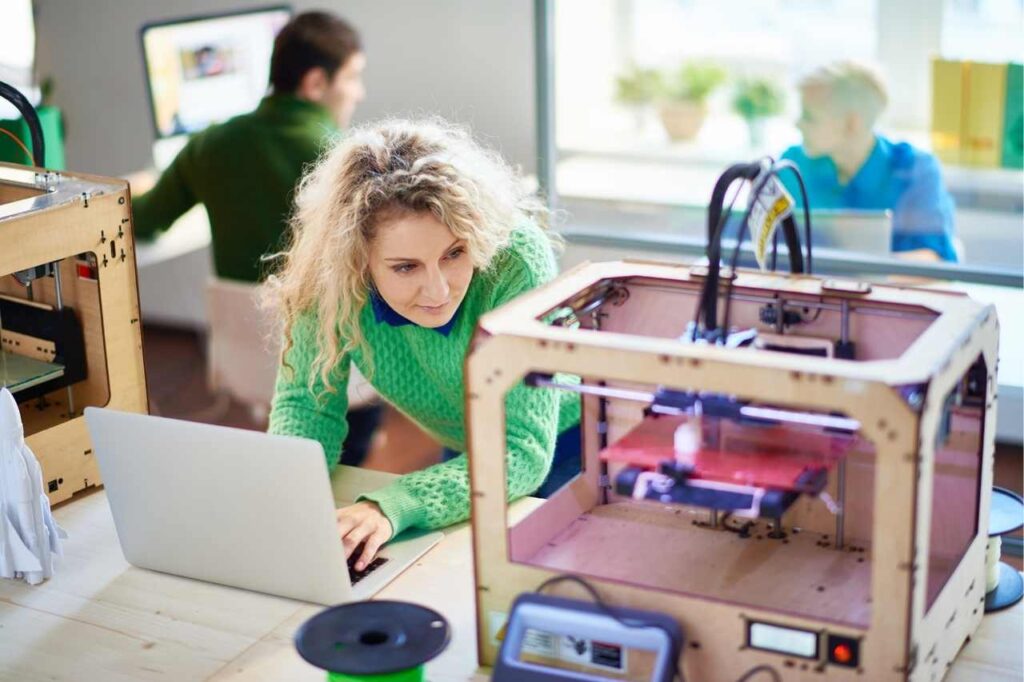Guide to 3D Printing For Children

Today’s world has so many applications for 3D printing, and kids can now join in the fun! Here’s how to get your kids designing and 3D printing!
There are numerous possibilities for screen-based activities when it comes to teaching kids how to code. At Tokyo Coding Club, we try to find a nice mix between screen-based and unplugged coding exercises.
In recent years, 3D printing has gained popularity and can support some of the ideas that young people are learning through coding games. Design, slice, print is a reasonably straightforward procedure. But you can teach or review a variety of coding topics when it comes to execution.
Kids Can Design In 3D!
You will require some sort of 3D design creation program for the design process. These are sometimes referred to as “Computer-Aided Design” or C.A.D. You don’t need to use the most advanced software when teaching design to children. Your toddler will become confused by all the “extras.”
In a sense, Thingiverse is an online library where you may download 3D designs instead of books. Knowing how the model would look before beginning to design in 3D is beneficial for children. On Thingiverse, kids can pretty much find whatever they want, so whatever they are interested in, you can definitely find a model of it there.
You must learn how to move and design in a 3D space once you have a notion of what a 3D model looks like. It’s not quite as simple as drawing on paper or doing 2D design. To start the youngsters out, we frequently go to TinkerCad.
TinkerCad is fantastic for teaching youngsters 3D design. The “Starter” lessons show learners how to move, insert, modify, and delete items in the 3D world after they log in. There is a bank of other, progressively harder lessons kids can begin on when they finish the introductory ones. If you want to go all out, have your kid download one of the designs from Thingiverse and then drag it into TinkerCad so they may customize it. Whatever they do, they will be honing their computational thinking and visual-spatial skills, which are both crucial abilities for a fledgling computer programmer to master.
Slice (Adult Assistance Needed)
A 3D design needs to be divided into layers that the printer can comprehend in order to be constructed. Make sure you obtain the right software for the printer you’ll be using because every type of printer has a unique proprietary slicing program.
You will export the print to a file once you have finished assisting your child with their 3D creation. The most popular file type for 3D design, the .stl file, is typically the best choice for export. The software that is compatible with the kind of printer you have will then be used to open that .stl file.
The printer and its software will determine what you view from there, although most of them have comparable functionality. You’ll probably be requested to perform some sort of repair check, in which the program scans the model for potential printing problems and makes any necessary repairs so you don’t have to. You could be asked if you want to make the model easier to dismantle by adding a “raft” to the bottom. Depending on the software, you could also be able to scale up or down. You’ll also likely have a “Slice” or “Print” button.
One of two things will happen once you select “Slice” or “Print.” The printer may start to buzz and warm up if it is connected directly to the PC. If not, a question on where to save the new file may be posed to you. This shouldn’t be a .stl file anymore. It now has a new file extension that most likely corresponds to the kind of printer you are using. This situation calls for the use of a flash drive (Thumb drive/USB stick) to transfer the file from the computer to the printer.
Children’s 3D Printing (Adult Assistance Needed)
You can now choose and print the file no matter how you got it to the printer. A robotic hot glue gun is quite similar to how a 3D printer operates. The printer is able to move up and down, forward and back, and side to side. The model has been divided into layers, so the printer only advances when it has finished one layer and is switching to the following one.
Their model is made up of numerous layers, which the printer simply stacks to produce their final design.
You should be aware that the printer nozzle gets rather hot. You should advise your child to observe the printer while it prints and NOT touch it. To prevent small children from cutting themselves on the 3D printers in schools, many of them are enclosed in a box or container of some sort.
Step By Step Guide to 3D Printing With Kids
Okay, let’s go over the precise steps required to start 3D printing with children.
- Brainstorm concepts for 3D print designs. Look for ideas on Thingiverse.
- Start using TinkerCad to create your first 3D print. A good place to start is with name tags, keychains, and bookmarks.
- Once your design is finished, select “export” and save the file as an.stl.
- Launch the 3D printer software that was included with it. Depending on the model of your printer, this will vary. Verify your printer’s settings with this program after importing the.stl file. Plug your USB flash drive into your 3D printer after exporting this file to it. Prepare to hit print!
Final Thoughts
You should start thinking about 3D printing for your children if you haven’t already. Kids may think about problem-solving, spatial awareness, and critical thinking through 3D design, all of which are crucial abilities for learning how to code. A terrific way to introduce creative children to programming and computational thinking is through 3D design and printing. What background do you have in 3D printing and design? Have you heard about the medical advancements made possible by this technology and committed designers?



